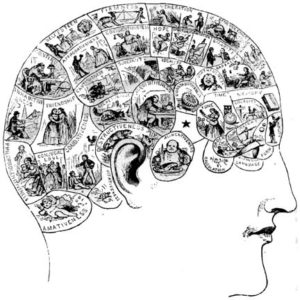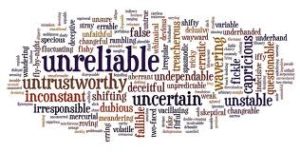Around the same time I started pondering the role of story in memory, as I discussed in Part 1, Stephanie West Allen, who frequently shares her fascinating finds from the story world, was sending me numerous links about memory research and its connection to story and storytelling. She’s the source of most of the material in today’s part 2 in which I synthesize some current research findings and theories about memory and storytelling.
 People think memory works differently from the way experts say it does. Research by Daniel J. Simons and Christopher F. Chabris reveals at least six beliefs about memory held by survey respondents that contradict what scientists know about memory. The incorrect belief that most relates to story is “memory works like a video camera,” a belief held by 63 percent of the researchers’ survey respondents. Indeed, Stephanie says, “We know the process by which memories are reconstructed in our brains each time we retrieve them is not like a video camera. They change in the reconstruction, in the remembering. Memory is very malleable and, to a large extent, we’re making our past up as we go.”
People think memory works differently from the way experts say it does. Research by Daniel J. Simons and Christopher F. Chabris reveals at least six beliefs about memory held by survey respondents that contradict what scientists know about memory. The incorrect belief that most relates to story is “memory works like a video camera,” a belief held by 63 percent of the researchers’ survey respondents. Indeed, Stephanie says, “We know the process by which memories are reconstructed in our brains each time we retrieve them is not like a video camera. They change in the reconstruction, in the remembering. Memory is very malleable and, to a large extent, we’re making our past up as we go.”
The reason memory is not like a video-recording may be explained by the next item:
We’re not recording experience; we’re creating it. As Leonard Mlodinow explains in a Psychology Today article:
… our unconscious mind takes the rather crude visual data collected by your retina, processes it, and presents your conscious mind with a clear and detailed picture. What you perceive looks real, but it isn’t a direct recording of what’s out there — it is a constructed image created from that data by filling in the missing blanks employing context, your expectations, your prior knowledge and beliefs, and even your desires. Our social perceptions are constructed in an analogous manner: we normally have limited data, and fill in the blanks employing context, expectations, etc. Hence our judgments of people, our experience of products, and even our assessment of financial and business data, are never purely objective reflections of our social reality. But since we are aware of only our conscious influences, and not the process our unconscious mind employs to construct our experience, we are often mistaken about the roots of our feelings, judgments, and behavior.
I would contend, therefore, that it’s primarily story with which we are filling in the missing blanks. To me, constructing experience is tantamount to constructing story.
That’s why memory is unreliable; we fill in gaps in a given  memory with with stories from other memories, and the more we surface a memory, the more we change its story. We are not only constructing memories in the first place, but in retrieving them over and over , we are re-constructing them. We need look no further than the Trayvon Martin case to know about the unreliability of memory. Stephanie West Allen notes in her blog:
memory with with stories from other memories, and the more we surface a memory, the more we change its story. We are not only constructing memories in the first place, but in retrieving them over and over , we are re-constructing them. We need look no further than the Trayvon Martin case to know about the unreliability of memory. Stephanie West Allen notes in her blog:
“Memory is a reconstructive process, says Richard Wise, a forensic psychologist at the University of North Dakota. “When an eyewitness recalls a crime, he or she must reconstruct his or her memory of the crime.” This, he says, is an unconscious process. To reconstruct a memory, the eyewitness draws upon several sources of information, only one being his or her actual recollection. To fill in gaps in memory, the eyewitness relies upon his or her expectation, attitudes, prejudices, bias, and prior knowledge.”
Not only unreliable, our memories are shifty and malleable. Stephanie writes of the “malleability of memory, the problematic role that storytelling therefore can play in a dispute, and how to ‘correct’ for the shifting narrative.” Here’s a concise reminder of the shiftiness of memory. In another of her blogs, Stephanie cites Jonah Lehrer’s When Memory Commits an Injustice from the Wall Street Journal:
Consider our collective memories of 9/11. For the last 10 years, researchers led by William Hirst of the New School and Elizabeth Phelps of New York University have been tracking the steady decay of what people recall about that tragic event. They first quizzed people shortly after the attacks, then after one year, and found that 37% of the details had already changed. Although the most recent data have yet to be published, they’re expected to reveal that the vast majority of remembered “facts” are now make-believe. … In recent years, neuroscientists have documented how these mistakes happen. It turns out that the act of summoning the past to the surface actually changes the memory itself. Although we’ve long imagined our memories as a stable form of information, a data file writ into the circuits of the brain, that persistence is an illusion. In reality, our recollections are always being altered, the details of the past warped by our present feelings and knowledge. The more you remember an event, the less reliable that memory becomes. … The larger lesson is that, when it comes to human memory, more deliberation is often dangerous. Instead of simply assessing our familiarity with a suspect’s face, we begin searching for clues and guidance. Sometimes this involves picking the person who looks the most suspicious, even if we’ve never seen him before, or being swayed by the subtle hints of police officers and lawyers. As a result, we talk ourselves into having a memory that doesn’t actually exist.
… because, I would suggest, the memory has been “storified” in our brains.
We become detached from the emotions of our storied memories in retelling them, especially when we start analyzing. Not only do we change our memories as we dredge them up and re-tell them, but we also lose the deep emotions we initially felt about those stories. So reports Sarah Moore, assistant professor with the Alberta School of Business:
… when we have an emotional experience, such as travelling or watching a movie, we develop feelings about those experiences. When telling stories about these experiences later, we can describe them and express our appreciation or dislike for them — but once we start to analyze them, the lustre of that emotion fades.
Our current beliefs shape the stories we remember. In a blog post, Stephanie quotes Carol Tavris:
Memory is a self-justifying historian. Memory keeps things consonant. If it’s a memory of how our parents treated us or how we were in the past … , the best predictor of our memory is what we believe now, not what really happened then. It’s such an enchanting thing. It’s why if you are currently feeling good about your mother, you remember how good she was to you as a kid. And if you’re really pissed off at your mother, you remember all the bad things. You are keeping the current view consonant.
So, the story you are telling yourself about a given person or situation informs your memories of the same entity.
In part 3, we look at autobiographical memory and foraging for memories.
